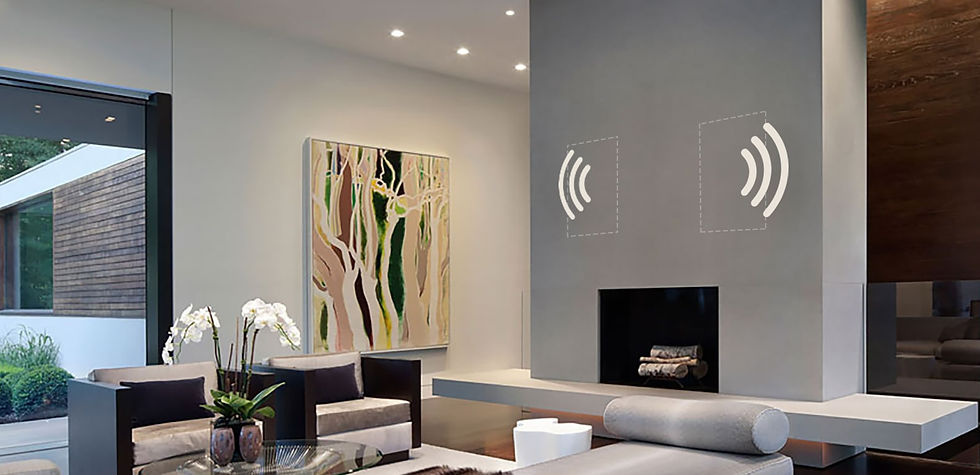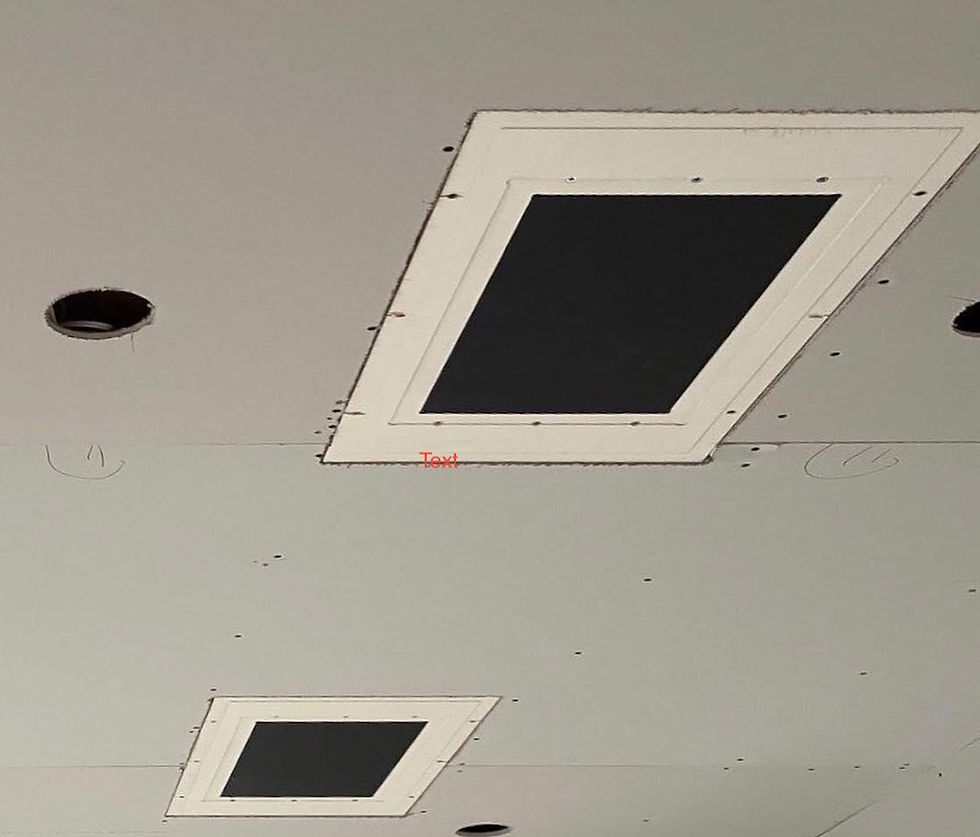Hide and Go Hear ~ Invisible speakers
- Buzz Delano

- Jul 31, 2025
- 3 min read
Updated: Aug 25, 2025
Buzz Delano
Principal Consultant, Delano Associates


When a home calls for excellent design aesthetics, sound can match the beauty with
invisible speakers installed instead of more ceiling and wall speakers. Sound matters
and so does invisibility when the room wants to look extra nice.
Back in the day of box speakers turning into in-ceiling and in-wall speakers, that was
cool. No more wires to hide, no floor or bookshelf space needed and of course, no
more discussions about “those are going where?” Except maybe for a special room
of two channel listening or a dedicated home theater, cabinet speakers lost their
place as “around the house” items.
Along the way, a few clever and creative speaker people decided to explore
technology that could make speakers invisible and play through some sort of wall
covering. Today, invisible speakers sound good and are designed to be nicely
covered with a variety of wall or ceiling finishes. That’s great news for AV
integrators, interior designers and homeowners.
While the obvious benefit is speakers unseen, another benefit is that fewer invisible
speakers than ceiling speakers are needed to fill a room with sound. The very nature
of invisible speaker technology is somewhat dependent on very wide off-axis
performance, meaning that when properly installed, invisible speakers will deliver
full sound almost anywhere in the room.
Consider the primary rooms in pretty much any home, from a nice 3,000 square
footer to a luxury estate, it’s going to be kitchen, dining room, living room and foyer
areas where most of the hang time and hubbub happens. So, that’s where music
should be available and these areas deserve extra attention to appearance.
Keep the visual focus in a foyer or dining room on the beautiful chandelier and
exquisite crown molding rather than having a couple of round grilles distracting the
eyes. A living room is often a place for quiet relaxation and nice lighting for various
moods. Music is a must so install invisibles in the living room to complement the nice
furnishings, art and décor touches.
And yes, the kitchen, often with a great room extension. Everyone loves to hang out
here so the chatter can get loud and sometimes the music level needs to contend
too. Do you really want to add a bunch of speaker grilles to the visual distraction of
the ceiling lights, pendants, air returns, smoke detector and perhaps even a ceiling
mounted wireless point? Of course not!
A couple of pairs of invisibles in the right places solves ceiling clutter issue and will
sound nice at moderate volume and will sound even better when it’s time for a
music party.

Covering up invisibles does require a bit more work than cutting a hole for a typical
speaker, but the visual benefit is massive. Once the speaker is installed, proceed
with standard drywall steps and the speaker is covered. Tape and mud. Sand and
skim. Sand and finish. Voila, invisible speaker!

Another great place for invisibles is around a family room TV. They can go in the wall
around the TV or in the ceiling above and in front of the TV. For the ceiling
installation, have the speakers about 3 feet in front of the TV for best sound.
if your client wants surround sound or a Dolby Atmos© system, install four
additional invisibles in the ceiling, directly above the main seating area. Hint, to help
the budget here…most manufacturers make lower priced invisibles that are suitable
for surround channels while you can put the top line model in the front main speaker
locations. Voila! Invisible, great sounding family room TV.
Hide and go Hear. Invisible sound is cool, and the interior designers will love it too!



Comments